Baling Hay
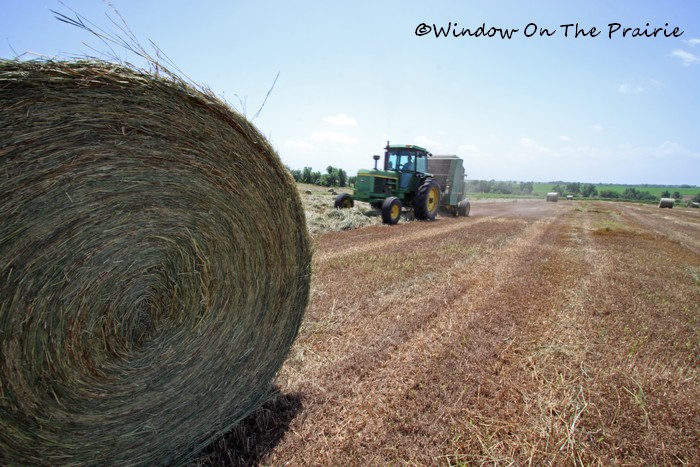
For the last couple weeks, in between rain showers, Harland’s been cutting and baling our hay.
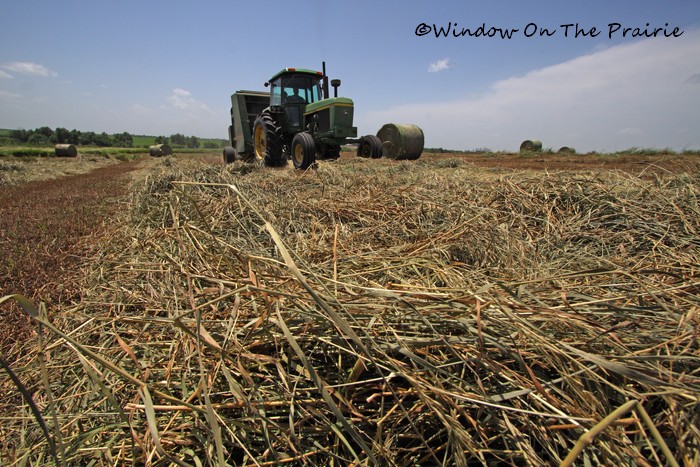
Cut and cured at it’s peak, it will be used next winter to feed our cattle. Harland watches the weather forecast carefully. He needs to have two days of dry weather when he cuts. Once the hay is cut down, it will lay in the field for 48 hours curing in the sun and drying out.
The wrinkle in all this cutting, curing and baling is: RAIN. Most of the rest of the year we hope for rain, but not during hay season. If the hay is cut and then gets rained on, it has to lie in the field even longer to dry out, losing nutrient quality with each passing day. Hence the expression, “make hay while the sun shines”. Hell hath no fury like a farmer who’s hay has been rained upon. Such a wailing and gnashing of teeth. Okay, so when it rained on some hay that was down last week, maybe Harland didn’t wail, but there was some teeth gnashing and disparaging remarks made about the weather service. But it turned out to be just a few sprinkles, and he was able to bale it later that day.
If the hay is baled before it is fully dry and cured, it can produce enough heat to spontaneously combust and catch fire. Once haybales catch fire, it’s nearly impossible to put them out. Many bales can be lost this way, and barns too if the hay is stored near them.
Two days after cutting, Harland comes back and bales the cured hay. As he drives over the hay windrow, the baler collects the hay and, much like rolling yarn into a ball, the hay is formed into a tight bale weighing between 600 and 800 pounds.
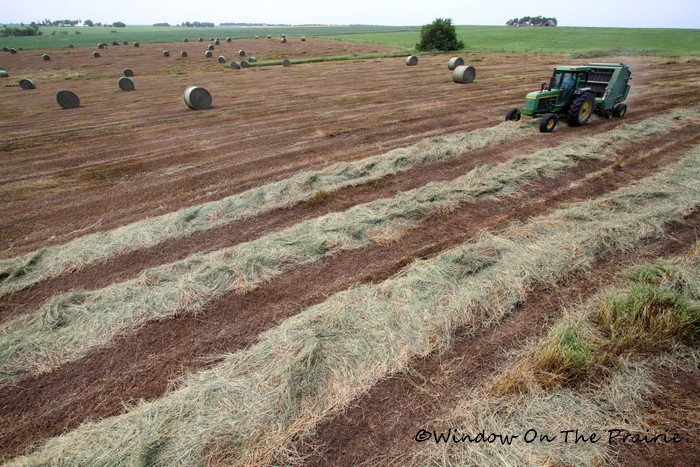
(All the bales in the pic above were made in just a few hours!)
Once the bale is full size, a netting is wrapped tightly around the bale to hold it together. Then Harland stops, lifts the back part of the baler up and the bale falls out onto the ground.
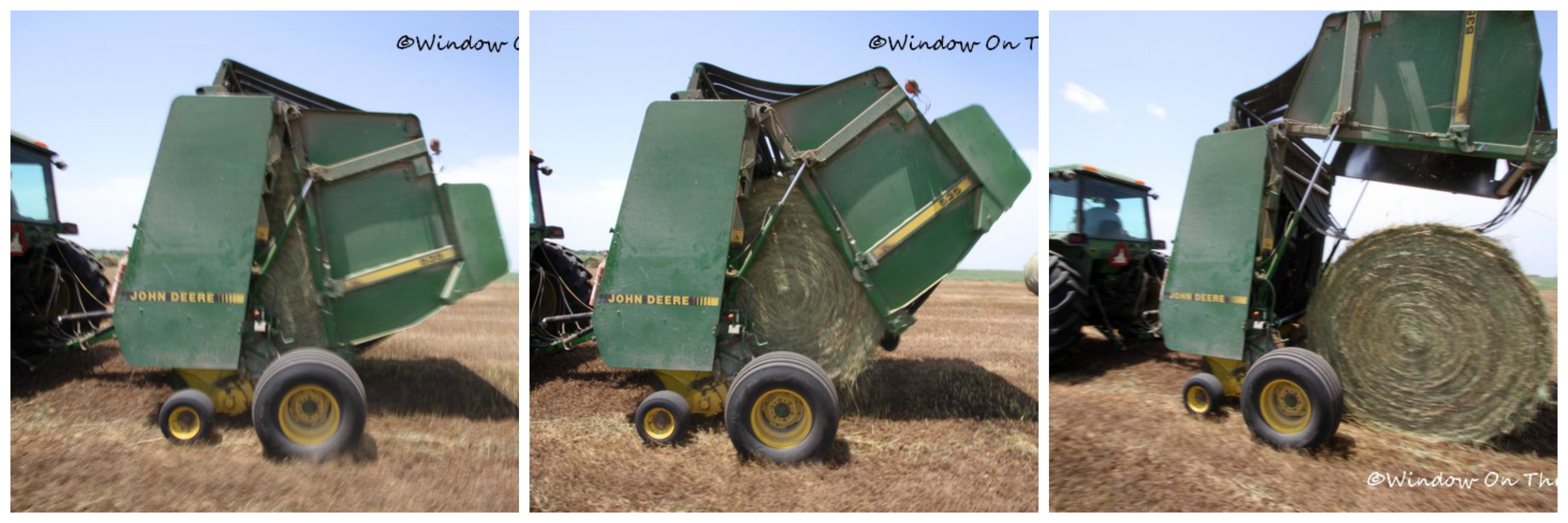
As he drives away, he lowers the baler lid back down.
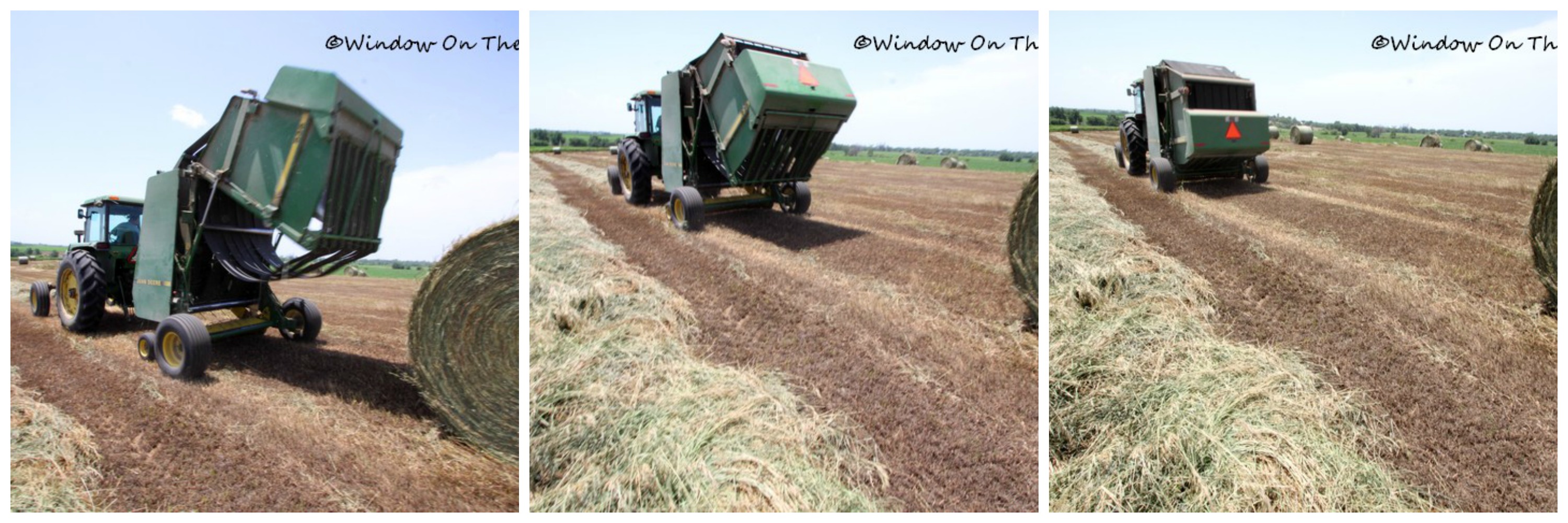
Here’s a close up of the bale netting:
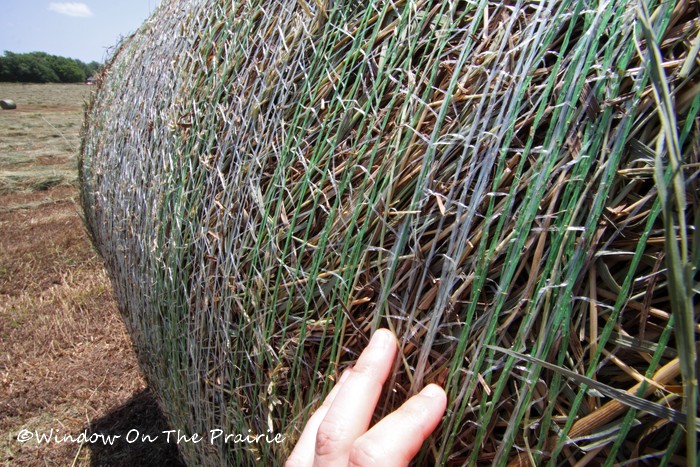
and a close-up of the end of the bale:
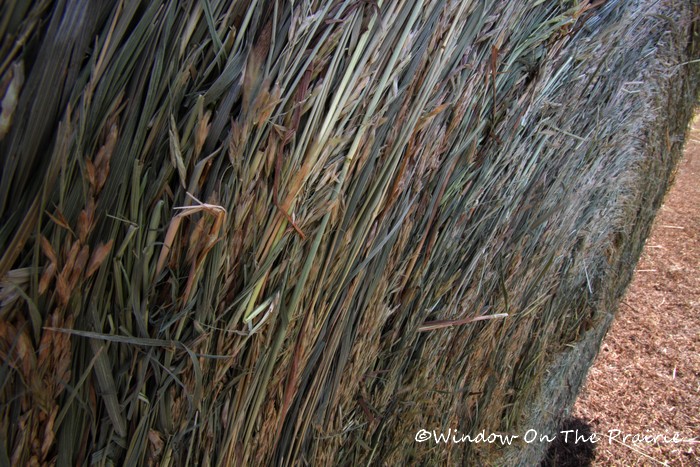
As I was taking these pics, I heard a noise, kinda like rice crispies in milk. I put my ear close to the bale and realized the sound was coming from the bale itself – the sound of new hay tightly compacted.
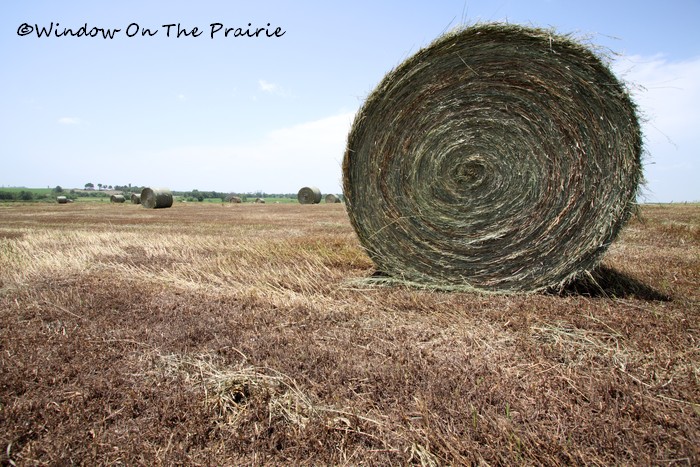
Later Harland will be back to collect the bales out of the field and move them up near the pasture where he lines them up in neat rows, ready to be fed to the cattle next winter.
More to come about haymaking – check back soon!
Click here to see my previous blog post about cutting hay including a VIDEO!
Click here to see my previous blog post about baling hay which includes a VIDEO!
xxoxoxoxoxoxoxoxoxoxoxooxo

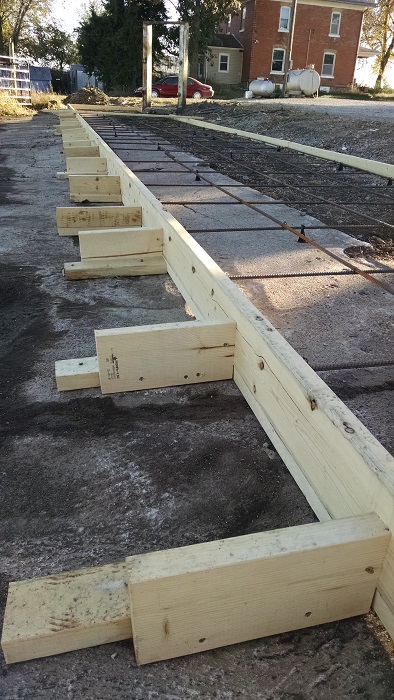
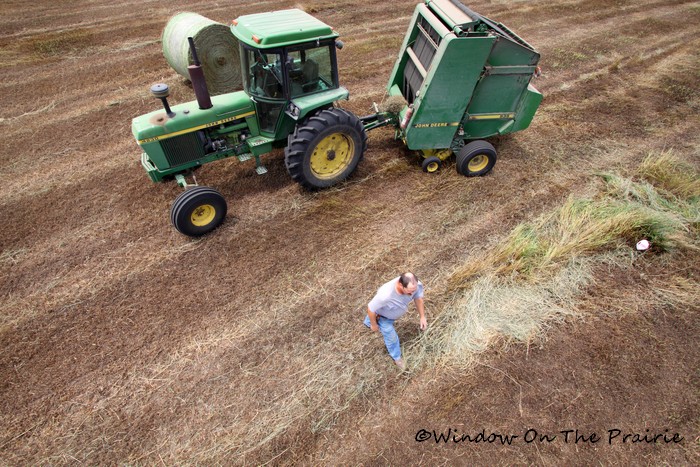
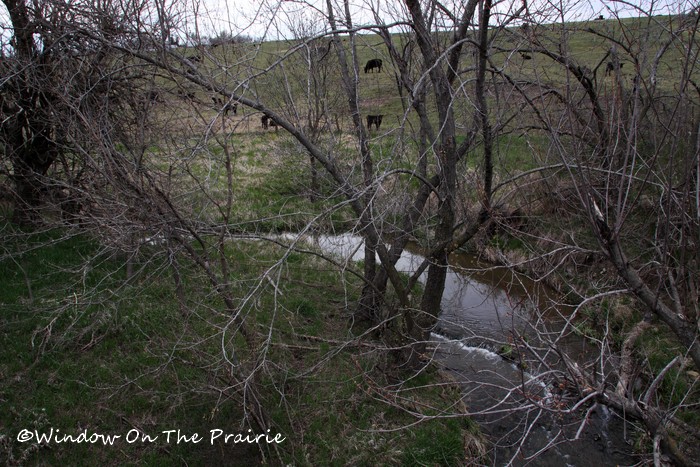
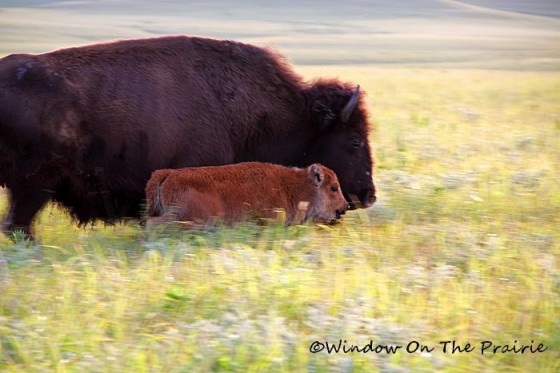
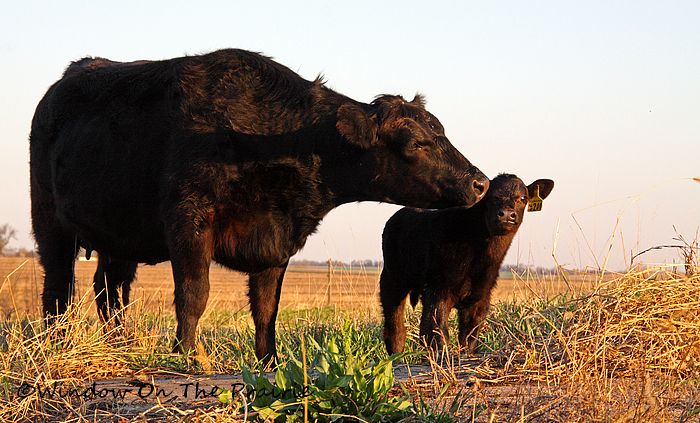

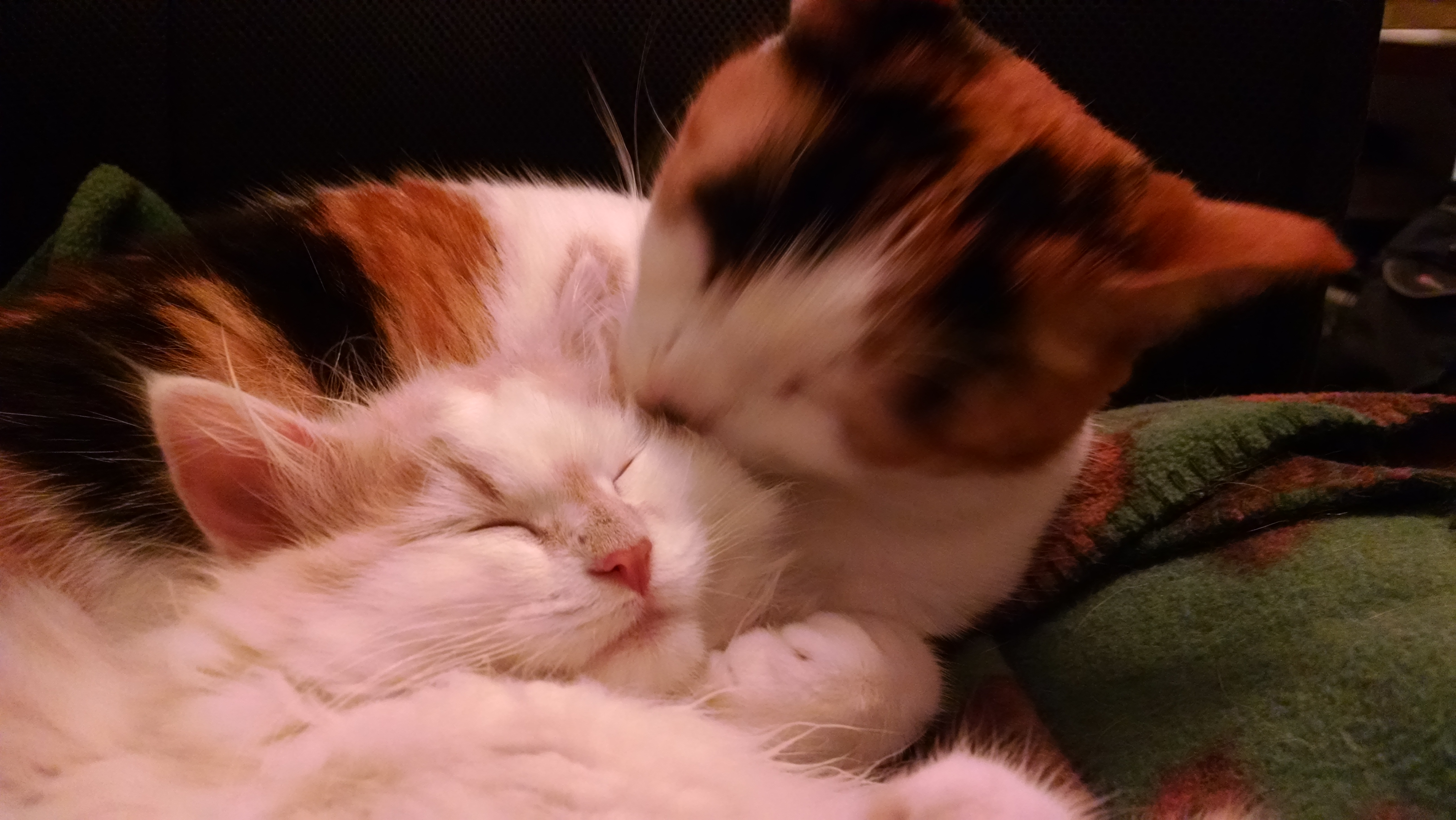
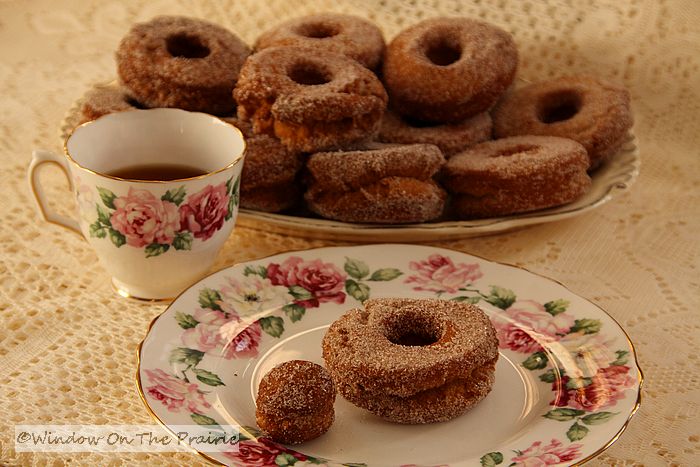
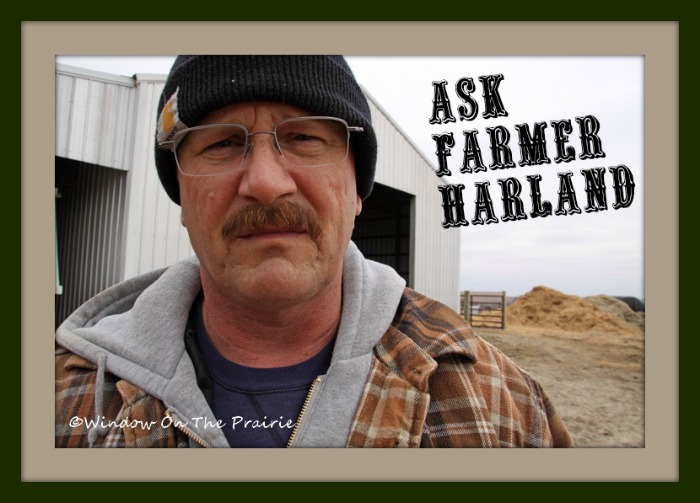
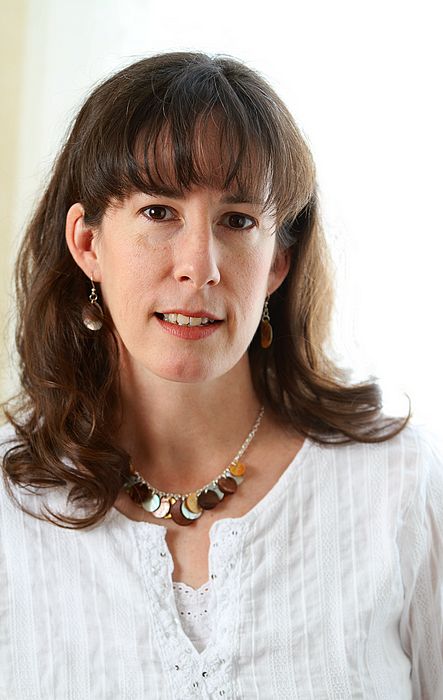


Ah the different seasons and activities that accompany each one on the farm!
True, we’re very much driven by the weather and seasons. Thanks Glenda!
Very interesting. Nice to see it up close like you have done for us. I would love to see how it was done with a team of horses and men….. Not for the faint of heart! Then I would be one of the women cooking for those hungry guys…….
Me too. And I would be cooking for all the men too, but I know I wouldn’t enjoy hanging over a woodstove all day in the heat of summer. Sounds like a recipe for heatstroke to me.
I forgot about the wood stove!!!!! No thanks…. I’ll go with modern technology.. We have mulch start on fire by itself but hay bales are another things.
Does Harlan have it done for now? Raining here in Lexington.
Thanks for the update.
He’s a few days from being done. He doesn’t have any hay down right now, and would like to cut tomorrow, but there’s a 40% chance of rain, so we’ll see.
We’ve been thru your part of the Kentucky on our travels. Beautiful country you have there.
You truly are at the mercy of the weather! WOW, I had no idea that hay bales could catch fire like that.
Last year Harland and his fire dept got called to a fire where some haybales had spontaneously caught fire. All the bales, several hundred of them, and the hayshed went up. Took several days to burn. No way to put them out. They smolder deep inside.
This sounds soooo familiar…trying to make hay between rains. Did Harland have the weather radio plastered to his ear every hour like my hubby did, I wonder? I’m curious…will the bales be covered, or will it do ok, out in the weather until it’s needed?
The bales will be ok out in the weather. They shed rain pretty well.
He has a weather radar app on his smart phone, so he watches the radar thru the day and plans accordingly. Before he got the smart phone, he would call me at home, I would pull up the radar on the computer, and let him know what it looked like. Much simpler now.
That would be so sad to lose the hay to a fire. Our daughter and son-in-law in Idaho live near a small dairy that has a couple of silos where they store silage for feeding the cows. One of the silos caught fire and the sheriff’s department had to warn all the neighbors to stay in their houses for a while in case it exploded!! Scary! It didn’t, tho’ and now that one is a short version of its old self.
I hope Harland gets all his hay cut, dried and baled with no problems! – I never would have thought you’d HEAR it making noises!! Funny!
How many times a season does he cut? Just wondering. Here it seems to be three times per year. They have finished cutting in our area, south Lexington. The bigger farms have bales like Harlan’s but some of the smaller farms have rectangle shapes.
Lots’ of rain and very humid last night and today.
Thanks for all you share.
Pouring down cats and dogs here right now. No hay will be cut today. We only get one cutting of hay per year. Ours is Brome hay, and after it is cut the first time, it doesn’t grow back enough to cut again the same year. It’s a once a year deal. Where I grew up in north central MO, the hay was Fescue, and you could get a couple cuttings a year from that. What kind of hay do you have there?
Not sure what kind it is. I just see it as I drive by. Could it possibly be just tall grass that is cut an baled? Sure looks like hay..
Well, hay is a generic term used when a grass is cut and used for animal feed. Most of the non-native grasses in this country were imported from Europe, like Fescue and Brome. Native grasses green up later in the spring than Fescue and Brome, so that’s why the native grasses were plowed under and non-native planted. Earlier green grass means less baled hay is fed. Other non-native grasses cut for hay include timothy, orchard grass, and bluegrass.
Does the hay ever get moldy? Wouldn’t that make the cattle sick if it did?
Sometimes, but not often fortunately. We don’t feed it if it gets moldy.